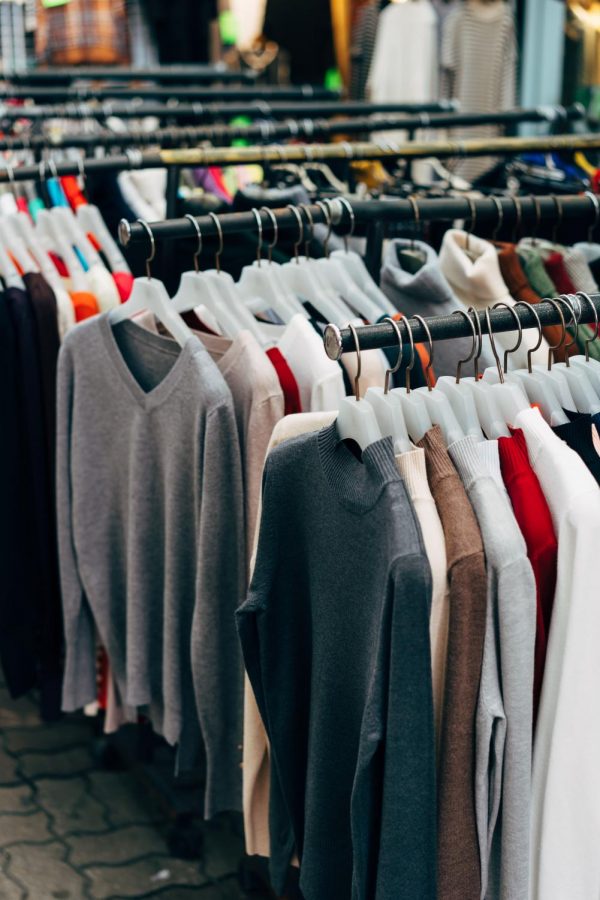Thrifting Trend Poses a Threat to Economic Equality
Thrifting as a rising trend poses a potential threat to people of low socioeconomic status.
January 7, 2022
Thrifting describes going shopping at a flea market, thrift store, or garage sale with the intention of buying second-hand products for a lower price. Though reusing or repurposing clothes is highly sustainable and beneficial for the environment, mass production and increased urbanization in post-industrial society have completely changed the attitude that the average person has towards clothing. Increased affordability and decreased living space meant that one could afford more clothes and get rid of older clothes, selling them to shops for a profit. This led to a large increase in the number of thrift stores during the 19th century.
While the industry of thrifting is undoubtedly profitable and sustainable, however, it exposed many injustices within the American economic system. During the 19th century, people who shopped in thrift stores mainly came from working-class families with less resources. At the time, many people believed that it was solely one’s own fault for being poor, an ideology that is surprisingly still prevalent during the 21st century. Thrifting was originally a buy-and-sell between people of lower socioeconomic status, who were already discriminated against for their different racial status, ethnicity, and religions that diverted from the Christian Anglo-Saxon norm in the United States.
This discrimination based on economic and wealth differences was so prevalent that on May 3rd, 1884, the Saturday Evening Post printed an issue with a satirical story describing a girl getting smallpox because she purchased a dress from a Jewish-owned resale shop. This clear perpetuation of antisemitic and anti-immigrant sentiments in a “humorous manner” shows how normalized and propagandized this stigma was.
By the 1920s, thrift stores became as established and organized as department stores. They had a steady income of clothes from housewives who wished to feel virtuous for “giving back”, and the Great Depression and post-WWII era widened the clientele that shopped at and sought clothes from these stores. In the 1950s, thrifting first became a trend for the mainstream consumer, as vintage clothes became incredibly popular. Thrift stores then evolved into an affordable place to find unique, one-of-a-kind items and since that point, thrifting has consistently been either a stigmatized or trendy thing to do.
A greater understanding of climate change and the concept of a personal carbon footprint increased the popularity of thrifting, as donating and buying second-hand clothes is incredibly sustainable.
History reveals that the industry of thrifting was created to support people of lower socioeconomic status. This fact has unfortunately not changed since the 1800s, and for many, thrifting is still the only affordable option for clothing. However, as thrifting grows more trendy and those who can afford more expensive items opt for thrift items, the cost of products rises. Though thrifting is an all-around good shopping option, prices could rise to the point where people dependent on second-hand clothes cannot afford their basic human need to have clothing. Thus there has to be an understanding that many people thrift out of need rather than for trends.
I believe that there is not a clear right or wrong for what to do in this situation, but if one who is not dependent on thrifting wishes to thrift, they should do it with the motivation of sustainability rather than fitting a trend or aesthetic. Everyone should be considerate of the fact that thrifting is a need for many and remember to treat people with the dignity they deserve.

